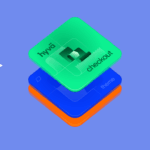Creditor Identification Number
SEPA and the Creditor ID
The Creditor Identifier or CI or UCI is part of the direct debit procedure.
The Creditor Identifier or CI or UCI is part of the direct debit procedure.
The Wikipedia states: “The Creditor Identifier is a mandatory feature for the account-independent, unique identification of the creditor of direct debit. It is used as part of the SEPA direct debit procedure. It enables the mandate of a direct debit to be clearly identified using data that can be automated.” So anyone who uses SEPA direct debits as a creditor (companies, businesses, mail order companies, online stores, etc.) must identify themselves uniquely with the help of the Creditor Identifier. This ensures that only the respective creditor is authorized to collect the associated receivable from the debtor’s or customer’s account. This improves the creditor’s position in the event of legal disputes and attempted fraud through phishing or hacker attacks. Customer relationships become much more secure as a result, as customers can always be sure when accessing their account.
Structure of the Creditor Identifier in Germany and Europe
Depending on the country, the UCI can consist of up to 35 individual digits. At the beginning, the number shows the respective ISO country code, which consists of two letters. Examples are FR (France), IT (Italy) or DE for Germany. The third and fourth digits are followed by a check digit, which is based on the new identifier for bank account numbers (= IBAN). The Creditor Business Code, a definition of the business area (from the fifth to the seventh digit) and country-specific features (from the eighth digit) complete the Creditor Identifier. The UCI for German creditors consists of 18 digits, unlike in many neighboring countries, it is issued by the Deutsche Bundesbank.
Application procedure
The Bundesbank is the point of contact for applying for the Creditor Identifier. The UCI can be applied directly online via the website (but also at numerous other credit and financial institutions). The procedure may differ slightly depending on the legal form of the creditor (sole proprietorship, freelancer, private or public legal entity). After accepting the procedure and the privacy policy, the personal data (company, address, HR number, contact person, jurisdiction, etc.) can be entered into the form. After the application, the applicant receives a confirmation by e-mail, which must be presented to the respective credit institution. Several companies belonging to one owner are regarded as a single entity and therefore require different identification numbers. However, the issuance of a creditor ID alone does not constitute authorization for the direct debit procedure. This requires a separate authorization by the account-holding institution (usually the applicant’s bank).
The UCI in daily practice
A prerequisite for the SEPA Direct Debit Scheme with a Creditor ID is a notification to the debtor or the payer so that the latter can clearly identify and assign the creditor. This can be done, for example, in the “reason for payment” field on the last conventional remittance slip (advance notice). If the customer already has a direct debit authorization, this can be converted into so-called basic SEPA mandates. The validity for company or basic direct debits in the SEPA Direct Debit Scheme is not limited in time for regular or occasional use. However, the SEPA mandate becomes invalid after three years of inactivity.










